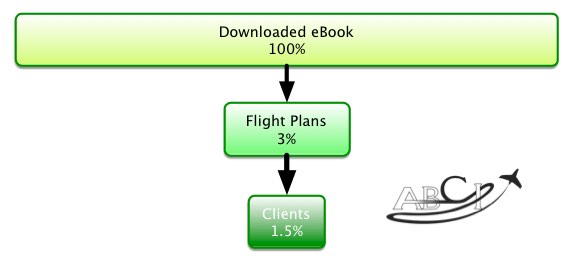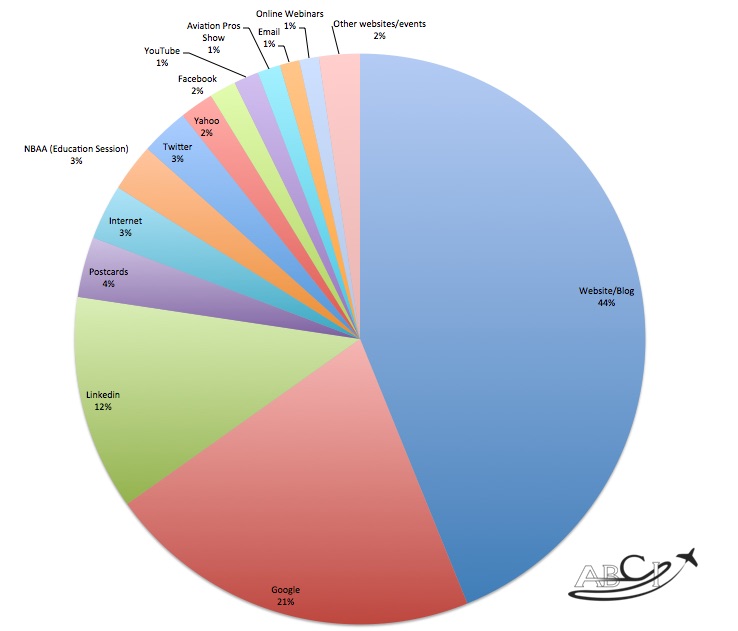We create a marketing funnel for each our clients – (we call it a Long Cycle Marketing System) using variations of the same methodology we use for our own company.
We find it ironic that some companies advertise their services using different tactics than they recommend for their customers. Some examples:
- Google advertises its Pay Per Click services via targeted direct mail advertising.
- Magazines use telemarketing to sell advertising space.
Granted, you need to adjust your methods to reach your ideal target audience.
So, here’s the process we use. Feel free to swipe, adapt and deploy it for your own company!
Phase One – First, define your ideal prospect.
For ABCI, that audience is:
- 95% are male
- 60% are mass-affluent
- 25% are affluent
- 55% are married
- 65% are college educated
- 40% are either active military or veterans
- Most are in the Transportation industry (big surprise)
Your results may vary.
We use this information to create a “lead magnet” that works for them. For example, you wouldn’t use flower photography or cute cat videos to market to this group, although those might work great if your product is targeted toward soccer moms.
How do we know the demographics? Since we’re already in business and have a customer list, we can have that list analyzed by a marketing data company who can provide the details.
Next, figure out how they found you:
And, here’s how they found us:
It is still VERY useful and helps us figure out which direct marketing campaign examples worked the best for us, and to determine where to make future investments.
If a particular activity was costing a lot more money than it appeared to be worth, given the number of leads it was not bringing to the table, we would strongly consider getting rid of it to replace it with something else.
Why not get rid of all but the most cost-effective activities and only have three or four, instead of 14, lead-generation activities?
For several reasons:
First, because diversity leads to stability. Many of these activities are seasonal or volatile. If the cost of postage goes through the roof, or if a trade show is wiped out by a hurricane, we will still have leads coming in!
Second, because most leads come from more than one source. Very few people will contact you the first time they hear of you or your product. But most prospects will list only the last activity they remember before they answered the question. For example, a prospect we first met at a seminar, then received several of our printed newsletters and other mailings. Our CRM system indicates that he opened several of our weekly emails. And yet, when asked how he found us, he listed “website.” All true, but not the whole truth.
Alas. The shortcomings of simplifying data.
So, if we found that a particular activity was very expensive and generating no (or few) leads, we would first make a more extensive effort to find out if it played a role with any of our existing leads. A survey, or an informal question added to our sales process, would be ideal.
Whenever we eliminate a lead generation activity, we add a new one. Testing is the only way to really see what works in a changing environment.
Phase Two – Determine your Conversion Rates:
Here are ours — all of our leads for this campaign downloaded an eBook (that’s how they became leads, after all. Of those, half eventually became clients.

So, a 3% conversion rate is actually pretty good for a product in this price range. The Marketing Flight Plan is deliberately designed to be a product that will attract our ideal clients and cause people who don’t fit that profile to “disqualify themsleves” from this campaign. Of course, we can always sell them products and services at a lower price point, based on what we learn from this process.
But, of the people who do the Marketing Flight Plan, roughly half become clients.
Phase Three and Beyond
After people become clients, there are many additional activities that we pursue to ensure they are delighted with our service, and to encourage them to refer others.
But those are topics for another day.
Things to Consider
 For now, let me leave you with a few thoughts:
For now, let me leave you with a few thoughts:
- Do you know where your leads come from? If not, put tracking mechanisms in place before you waste another dollar.
- What is your most and least cost-effective activity? Do more of what works. Test, tweak or discard what doesn’t.
- Can you add lead generation activities without adding significantly to your budget? (Maybe repurpose blog posts as LinkedIn updates, or podcasts? This can be done with less time than creating new material from scratch, sending out a mailer, or going to trade show!)
- Where do the wheels fall off as prospects engage in each step in your marketing funnel? Are you getting enough leads in the “top of the funnel?” If not, focus on lead generation activities. If you’re getting lots of leads but they don’t result in sales, focus your efforts on the step that seems to lose the most people. Perhaps that’s by design, like ours. Or perhaps you need to make the next step more attractive. Or create a new step in the process – perhaps you’re asking prospects to take too big a “leap.”
Any other ideas?
Add them below!} else {..

